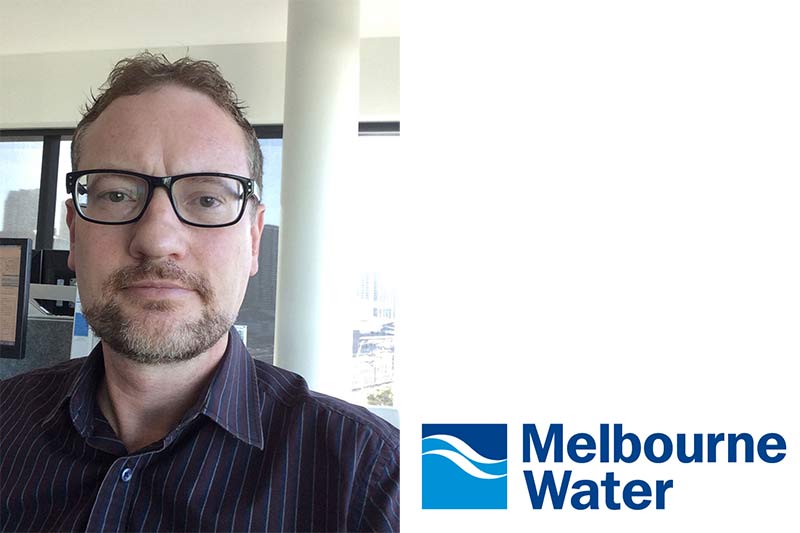
Paul Siemers, Director- Digital Strategy and Architecture at Melbourne Water talks about progress in the areas of predictive and prescriptive big data analytics, automation, internet-of-things (IoT) and Artificial Intelligence (AI) at Melbourne Water. A lot of it is driven by bringing together data from multiple internal and external sources.
Melbourne Water is owned by the Victorian Government and provides safe, secure and affordable water services to Melbourne. Melbourne Water treats and supplies drinking and recycled water, removes and treats most of Melbourne’s sewage, and manages waterways and major drainage systems in the Port Phillip and Westernport region.
Mr. Siemers has been with the organisation since 2009. He has extensive experience in IT management, technology-enabled process change, strategy and architecture.
What’s happening in terms of digital transformation at Melbourne Water?
We have been running a digital transformation programme for 2 years. We have entered the second iteration. It is about using digital technology to make the organisation safer, faster, smarter, easier to work with.
We are a water utility. So there are big opportunities for us in the areas of operation automation, big data, IoT, operational intelligence and AI. There are cultural and organisational restraints on how fast we can move but we have made some progress in those fields over the last two years.
Can you give us some examples of the kind of projects being undertaken in these areas?
One of our flagship projects is about field mobility. For the last year or so, we have been deploying tablet and smartphone based mobility for the field staff.
Automation is about bringing together multiple sources of operational data. We are using OSI Pi, a standard piece of industry kit. We are using that as a platform to pull together all our operational data, in order to provide predictive, and hopefully, prescriptive analytics.
In terms of IoT, we are piloting lower cost sensors for areas, where it is cost-prohibitive to put in traditional sensors. Take manholes for example. We have tens of thousands of manholes. They get stolen at times. It is expensive to put a traditional monitor on each one. But you can put an IoT sensor on each one, to track when they are being opened and not put back.
What kind of uses do you see for predictive and prescriptive analytics?
One group of users would be the people doing the long-range planning, the network planners. But operational executives can also use analytics to make reasonably quick decisions.
Let’s take the example of flood modelling. Netherlands has a lot of experience in dealing with floods. We deployed a system from there. We need to pull together information from the different data sources, like weather data, run flow data and model it real time, projecting it out onto maps, so that you can see quickly and reasonably accurately, who’s going to be impacted and make decisions about what we need to do.
In the past we used to do it with a lot of manual intervention. That would put people at risk. By the time you have done the model, it’s too late.
If there is a big weather event, you need the information in real-time or near real-time to make the key decisions. A day or week later you can only use it to say why was the city flooded.
In this example, which are the agencies from which you would need to get the information?
We are getting the data mainly from the Bureau of Meteorology. But we are working with other agencies too. For example, we work with Victoria State Emergency Services for publishing the data.
Is there any centralised mechanism right now for sharing this data or sharing the outputs from the analysis?
There is data.vic.gov.au, which is the Victoria government’s data sharing initiative. We participate in that and we publish data there. But beyond that, most of the data is shared point-to-point.
There is definite interest in sharing more data. Steps are being taken in that direction. But there’s opportunity to do a lot more. I think we could be doing more to aggregate the data in a way that it can be shared more openly. Public data is more useful if combined with different data sets.
For example, if you are digging a hole, we have a system called Dial Before You Dig. At the moment, it sends a query to each agency to ask if there are any electrical assets or water assets there and so on. What you want is all that data in one place. Then you can look at it yourself. It would be more efficient.
How is AI being used in Melbourne Water?
There are many potential uses of AI. We have been doing rules-based processing for some time. For instance, if you apply to sub-divide a property, there is a decision-making process around whether you can or can’t sub-divide it and what restrictions we put on that.
This is like early AI, because it is working through a complex rule-set, to say that while you can sub-divide it, but not if more than a certain percentage will be subject to flooding.
But going forward, anything where you are working with large data sets to make decisions is related to AI. We have robots that go down water pipes, sewers and take videos. We are experimenting with AI there. We are trying to get IBM’s Watson trained, so that it can watch the footage and alert us if there are problems.
We can also use data sets to understand how the network behaves under certain sets of conditions and how does that change based on our response? Like when there is a wet weather event, what happens if we do or do not open the floodgates. We are hopeful that we can use AI to model that. It is not to necessarily replace the human decision-maker but to act as an advisor to the person.
What are your concerns regarding cybersecurity in view of all the automation and connectivity in the industrial systems?
Cybersecurity is a critical concern for Melbourne Water. We provide an essential service. When IT connects out through operational technology, internet-of-things out into the real world, there are huge risks.
We are investing heavily in cybersecurity. We have appointed a Chief Information Security Officer, the first one in the Victorian water industry. We speak regularly with the Board about cybersecurity.
We are doing the standard things, like following the Victorian Protective Data Security Standards (VPDSS).
But the real challenge is filtering out the real risks from what are the things you might think of as a risk. People are very focused on certain threat vectors. But we need to try and work out whether these are the real threat vectors.
Take for instance, the risk of human error or disgruntled employees. It is less exciting than the risk of terrorist attack. But those are bigger threats. Those people are already inside your organisation. They don’t have to hack in.
People think cybersecurity is a computer problem. Whereas in fact cybersecurity needs to go hand-in-hand with physical security and human security. We need a more holistic view of cybersecurity.
If people are sending phishing emails, it’s very tough to stop every phishing email getting in. What you need to do is train people.
When you get an email from someone you don’t know, saying click here for a free prize, please don’t click. You need to train the receptionist that if someone comes to the front door and says that I am from IT, I am here to fix the computer and asks where is the computer room, ask for ID.
Is security being taken into consideration while say installing IoT sensors on the manholes?
The main security step we have taken is to separate the IoT network from our control systems the systems that we use to control the infrastructure.
I think, over time we will need a more sophisticated approach than that. But our approach right now, is not to use them for critical data points and not to allow them to connect to the control systems. There are internal firewalls between our operational control systems and our office automation systems. Then there are firewalls again between that and the external world. If we bring in IoT data, we would move it through a Demilitarized Zone (DMZ) into the office automation area.
















